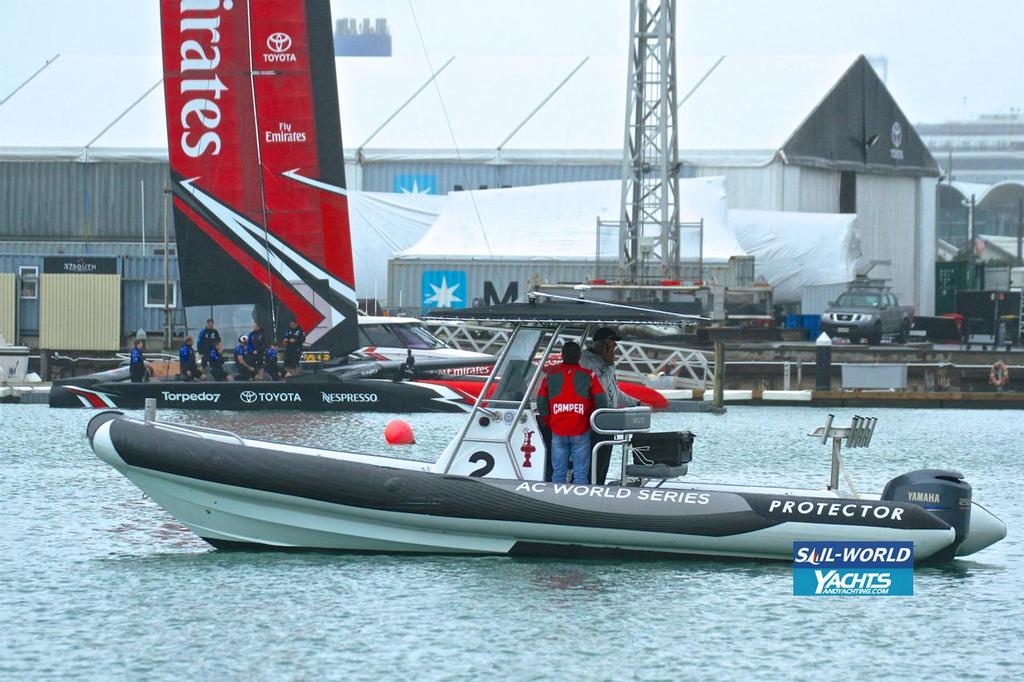America's Cup - Emirates Team New Zealand reveal big AC50 breakthrough
by Richard Gladwell, Sail-World.com NZ on 14 Feb 2017

Emirates Team NZ get some close attention, despite the rain - Westhaven - February 14, 2017 Richard Gladwell
www.photosport.co.nz
Emirates Team New Zealand have splashed their new AC50 in Auckland this morning and revealed another break-though.
In the 2013 America's Cup the team designed the first foiling catamaran even though that concept was not contemplated in the rules. It was widely reckoned that they revealed their secret too early and other teams were able to copy in the time available.
Instead of conventional grinding pedestals the AC50 features cycle grinding pedestals ('pedalstals') which allow the crew to use their more powerful leg muscles to grind and provide the power for the AC50 systems.
All other teams have used conventional arm driven grinding pedestals which are a lot less effective, cannot be driven for extended periods at a high heart rate, and use a much weaker muscle group. The bonus for Emirates Team New Zealand is that they have four grinding positions per side, while the other teams have two - but with two grinders on each.
The use of cycle pedestals where the crews pedal to provide the power are not new; they were tried in the 12 Metre Class in 1977 by the Swedish Challenger, Sverige. In that use, the crews were mostly below decks, which also reduced windage.
In the AC50 wing-sailed catamaran the crews have the challenge of providing the hydraulic power pressure using conventional grinders, which in turn requires very energy efficient systems or the teams are inhibited through the use of limited power. The solution the Emirates Team New Zealand have developed both extends the amount of power able to be generated and available for use and reduces stress and effort on the crew in generating it.
On her first sail today, Emirates Team NZ's AC50 looked very impressive - sailing in winds right on, or below the minimum wind limit of 6kts with the wind at times being only 4kts - and not suitable to race conventional boats.
She did one run up the harbour, seen by Sail-World, which after a few seconds to build speed, she lifted onto her foils effortlessly and stayed foil bourne for a kilometre or so, without touching the water. On the return run downwind, she again climbed slowly onto her foils over a period of 2-3 seconds and then stayed foiling without touch down.
Her launch this morning was attended by one spy boat from another team complete with camera man and the skipper on the phone, presumably back to Bermuda.
It is not known at this stage, with just 10 weeks remaining until the start of the America's Cup regatta, whether the other teams have the time to emulate the cycle pedestals. However, they do solve one of the big challenges, possibly the biggest challenge of the 2017 America's Cup.
If you want to link to this article then please use this URL: www.sail-world.com/151751